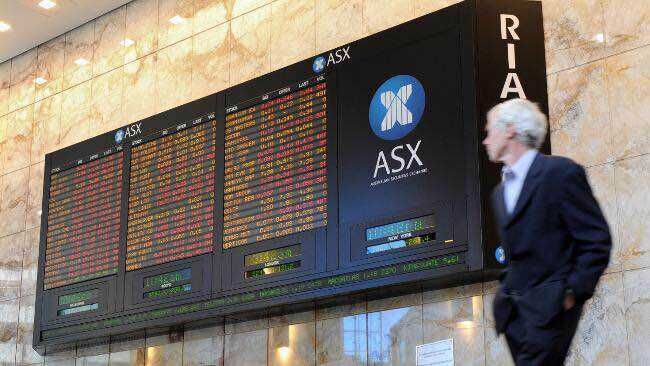
Australian listing advantages:
1. Australia is one of the most stable and safe capital markets in the world
2. With the help of professionals, Chinese companies can become international listed companies on average for 6 to 8 months, saving time and costs and seizing development opportunities.
3. Integrate the advantages of Australian mineral resources and agricultural and animal husbandry resources, get twice the result with half the effort and have good projects;
4. It is possible to build an international high-quality industrial chain because Australia and China have strong economic ties.
5. Raise capital for the company's growth and development
6. Enhance the image in the hearts of the public and investors, so that customers and suppliers can rest assured that they are exploring new markets.
7. More advantage in the field
8. Enhance the value of the company, compete for strength and create more opportunity value
9. Attracting institutional investment in parallel with public investment
10. The legal environment for enterprises to enjoy foreign-funded enterprises
11. Create the best conditions for listing in multiple places
12. Not only suitable for large and medium-sized state-owned enterprises, but also suitable for small and medium-sized private enterprises.
Australia's advantages:
Mature economy
Australia has a mature industrial economy consisting of a growing service industry and a wide range of manufacturing industries. Although Australia is still the world's leading producer and exporter of agricultural products and minerals, the telecommunications and information industries are the fastest growing economic sectors. Overall, Australia has an economic environment characterized by low inflation and high output. In the past few years, Australia's economy has shown a healthy growth. Last year's GDP growth rate was 4.4%
Strong financial market
As one of the developed and wealthy Western countries, Australia is able to provide ample sources of funding for businesses. The Australian Stock Exchange (ASX) is the second largest stock and equity trading market in Asia after Tokyo, and the Sydney Futures Exchange has maintained the largest and most innovative futures market in the region. Australia's developed capital market has attracted a large number of overseas companies to list in Australia. Because of its highly regulated, well-developed financial system; a financial market with considerable depth, liquidity and transparency, and a full range of financial products and services including stocks, bonds and funds; possesses multilingual, highly skilled With professional staff and world-class high-tech communication equipment and world-class policies and regulations, Australia is increasingly recognized as one of the important financial centers in the region to enter overseas markets.
Geographical and economic advantages
As an important bridge connecting Western markets and the Asia-Pacific region, Australia has geographical and economic advantages unmatched by other countries and regions. Due to the proximity of geography, Australia maintains economic complementarity and connection with Asian countries. Australian products have always been of good quality and credibility in the world, especially in Southeast Asia. For Asian countries, they have cost advantages, and with the Australian brand, it is undoubtedly the same. Pass to the Western market.
China's advantages:
A huge consumer market with more than 1.2 billion people in China is bound to be a huge consumer market. With the continued development of China's economy and the further improvement of people's living standards, China will continue to be the world's largest potential consumer market. Huge production bases Relatively developed countries and regions around China such as Hong Kong, Taiwan and Japan have moved their production bases to China in order to gain a competitive advantage in cost and directly enter the world's largest potential market. Rich natural resources and cheap labor make China an important production base in the world.
Rapid economic growth China, as one of the highlights of the world economy, has maintained a high economic growth rate. Since the early 1990s, China has maintained an average economic growth rate of 11%. China is an increasingly important seat in the world economy. It has become the 11th largest trading nation and the largest foreign investment destination except the United States. Lower production costs Due to lower labor costs, energy and rent land prices, the lower production costs of China's vast rural and small towns are highly attractive.

What are the advantages of listing in Australia?
First, Australia's economic development advantage
Australia has a population of 20.6 million, accounting for less than 0.5% of the world's population, but its GDP ranks fifteenth in the world. The economic experience has continued to grow for 16 consecutive years. It is the longest period of prosperity in history and has been the fifth consecutive year. The most resilient economy in the world" (OECD-OECD). Since 1996, the country’s average annual real GDP growth rate has been 3.6%. According to the Economist Intelligence Unit, Australia’s average annual growth rate will be 3.4% in the three years to 2010, higher than the US and UK., France, Germany and Japan.
Second, the advantages of ASX
1. The world's seventh largest stock exchange
2. Reasonable investment structure and high liquidity
3, mainly for small and medium enterprises
4, high price-earnings ratio
Chinese companies need to be transformed, upgraded, and need to go directly to the capital market for financing. In addition to the domestic A-shares, Hong Kong, and the United States introduced in the previous issues, there are still many other options. In April 2007, TWT Holding Limited, sponsored by the author, listed on the Australian Stock Exchange (ASX), which kicked off the listing of Chinese companies in Australia. The Australian Stock Exchange became a Chinese company overseas. Another destination for listing.
The vast majority of Chinese companies are still unfamiliar with the Australian capital market. In fact, the Australian capital market is the second largest capital market in the Asia-Pacific region after Japan, which is three times the size of Hong Kong and six times that of Singapore. Its financial derivatives. The degree of development is the first in the region.
According to 2012 statistics, more than 2,000 companies are listed on the Australian Stock Exchange, belonging to manufacturing, retail, media, transportation, financial services, mining, biotechnology, real estate, construction, tourism, communications, healthcare, e-commerce. Industries such as infrastructure are divided into industrial sectors and mining oil sectors. Its distinctive features are: large stocks with stable performance and stable development prospects, and investors generally retain the stocks they buy. Listed companies listed in Australia can be divided into four sectors: manufacturing sector, financial sector, service sector and resource sector.
The conditions for listing on the Australian Stock Exchange are:
1. At least 500 shareholders, each investing more than 2,000 Australian dollars; or at least 400 shareholders, each investing more than 2,000 Australian dollars, and 25% of the shares are held by non-related parties.
2. And the net profit for the last 12 months is A$400,000; or the net tangible net worth is A$2 million; or the market capitalization is A$10 million.
The advantages of Chinese companies listed on the Australian Stock Exchange are as follows:
1. The listing environment is good, and it is closely related to China.
Australia is one of the few countries in the developed world to maintain rapid GDP growth for many years, and the political environment is stable. China and Australia have maintained close political and economic exchanges for a long time. The Chinese economy and culture have been integrated into the mainstream Australian system, and trade with China has developed rapidly. China and Australia have only two hours of time difference, and the closeness of time will show a clear advantage in the stock market. The Australian stock market is relatively mature, and its credibility, cooperation and efficiency have been widely recognized in the international market. The Australian securities market is particularly good at capital operations in mining, energy, technology and managed property investment projects. By listing in Australia, companies can better change the financing and financing environment. The Australian capital market is not only suitable for large and medium-sized state-owned enterprises, but also for small and medium-sized private enterprises. With the services of a professional team, Chinese companies can become an international listed company in the world's most stable and secure capital market on average for 6 to 12 months.
2. The threshold is low, and the refinancing opportunity is large.
Since Australia is a Commonwealth country, its securities listing rules, trading systems and regulatory regulations are very similar to those of the London Stock Exchange, but its listing threshold is lower than that of London's main board and even the Growth Enterprise Market (AIM). Generally speaking, after the company is listed in Australia, after one or two years of development, it will be simpler and easier to go to the London GEM or even the main board for secondary listing.
3. New markets, new opportunities
The Australian securities market has experienced a history of more than 100 years. Compared with the Chinese securities market, the Australian securities market is undoubtedly a mature market. For Chinese companies and investors, it is a new market worthy of attention and understanding.
4. Low listing cost and short waiting time
The listing cost of the Australian Stock Exchange is lower than that of Hong Kong, which typically accounts for 8%-12% of the financing amount (depending on the amount of financing), including underwriters, lawyers and accountants, and exchange fees. The time required for listing in Australia depends on the complexity of the project. Generally speaking, if the listing application materials meet the listing requirements, it can be listed in Australia for as long as 8-6 weeks from the time the company submits the listing application to the approval of all conditions for the Australian transaction.
5. Companies listed on the Australian Stock Exchange can also be listed on other stock exchanges such as Tokyo or London. (After the company's conditions are mature, it can be transferred)
6. Enhance the international visibility of the company, help to expand the international market, enhance the image of the public and investors, and reassure customers and suppliers.
7. Listing in Australia, promoting the integration of corporate management mechanisms with international standards, promoting rapid development of enterprises and enhancing their competitiveness.
8. Australia is one of the most stable and secure capital markets in the world
Australian Stock Exchange listing fee
The fees charged by the Australian Stock Exchange include the fees charged for initial listing and the annual fees charged after the listing of the company. According to Ernst & Young's calculations, if a company raises between A$20 million and A$50 million after listing, then ASX charges pre-requisition fees including underwriting commission and prospectus. It accounts for 4%-7% of the funds raised.
All listed companies listed on the Australian Stock Exchange must obtain a license to be officially listed on the Australian Stock Exchange prior to listing. Companies applying for official listing are subject to the conditions precedent in the Australian Stock Exchange Listing Rules. At the time of application, the company must provide the Australian Stock Exchange with the required documents to demonstrate compliance with the Australian Stock Exchange Listing Rules and pay Listing fee. Companies intending to list on the Australian Stock Exchange should first hire consultants, including:
1. Lawyers, underwriters, accountants and corporate consultants, etc., negotiate with the consultants hired to prepare for the listing.
2. The company shall prepare and submit a prospectus. The contents of the prospectus include the company's assets, liabilities, income and performance statements. The preparation of financial accounting statements shall be in accordance with international accounting standards. The prospectus shall be submitted to the Australian Securities Regulatory Commission (ASIC) and Australian Stock Exchange (ASX).
Within 7 days after submitting the prospectus to the Australian Securities Regulatory Commission, the company shall submit a listing application to the Australian Stock Exchange for review and approval, and the stock will be available for listing. The Australian Stock Exchange's IPO period averages 6-8 weeks, and the entire listing process is approximately half a year to a year.
Chinese companies may encounter wind and rain and twists and turns in overseas listings. In order to minimize the risk of listing and speed up the listing process, it is recommended that Chinese companies should:
1. Establish a good corporate governance structure;
2. Hire a team of experienced and well-executed listed consultants;
3. Participate in design reorganization, mergers and acquisitions, and listing plans by professional lawyers to avoid legal risks;
4. The industry in which the company is located and the business it is engaged in are preferably familiar to Australians;
5. Set up a special listed working group to prepare for listing, and the working group should have members who are proficient in English;
6. Timely and sufficient information disclosure, regular communication with shareholders, especially major shareholders;
7. Appoint a well-known local independent director to increase investor confidence;
8. The chairman of the company should pay attention to the listing work and have unwavering confidence in the company's listing.
In summary, under the background of economic globalization and the integration of international financial capital, international capital flows to China, and Chinese enterprises have become the general trend of overseas financing. How Chinese companies seize opportunities and use the "blood" of international capital to seek better development has become a topic that cannot be avoided. Like a huge magnet, the overseas securities market attracts more and more Chinese companies to conduct overseas listed equity financing.
Listing in Australia is a brand-new opportunity for Chinese companies. It not only allows Chinese companies to integrate the funds needed for development, but also encourages Chinese companies to change their mindset, pay attention to capital risk compensation, and improve the company's governance structure. For Chinese companies preparing to go public in Australia, they should choose the most suitable way to go public according to their own scale, future development goals, financing needs, existing markets and the characteristics of the Australian capital market.


